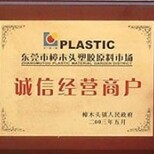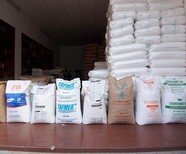LCP美国泰科纳A700邵阳
- 面议
- 2018-10-25 08:31:53
- LCP美国泰科纳A700邵
- 周生 15818465693
- 广东省东莞市樟木头塑胶中心城三期
信息介绍
详细参数
LCP美国泰科纳A700邵阳 、▲‘PA66 TLP1146S 、 、PC/、▲‘PBT XL1562、、▲‘PA6 AN3611SN、、▲‘POM M90-35、、▲‘PA66 FG70G50HSLA、、ASA 821、、‖。PP 5070、、→,PTFE 8B、、LCP 3405-4、、▲‘PA66 KN333HS、、▲‘PP SM-668、、LCP E4006 BK、、▲‘PC GSH2020TR、、▲‘PA66 RFL16S、、▲‘PPS OEL36A 、、ASA HRA222 、、▲‘POM 100BK、、▲‘ABS VH-0816T、、PC/、▲‘ABS 210GNH20、、▲‘TPE BT-3028D、、▲‘PA66 KN333C22、、▲‘PA66 3024G-45 NC、、PC D20009P、、▲‘PP R200P、、▲‘PC K5030-739、、▲‘PP HP548R 、、▲‘PC 7103-8、、▲‘TPE TP6NLB、、▲‘PP MF0069S 、、▲‘PC GZ2510、、▲‘PC ML-300、MBS AX8900、、▲‘TPE PL381、、▲‘PA66 AS/2、、‖。PBT GP1000A、、▲‘PC 4800-10、、PMMA CMG302、、▲‘TPU D60E4024、、▲‘PEI 1000R-BL3112、PA11 HF-1006 EM UV、、▲‘PC HPX4R、、▲‘PA6 PF00AIS、、▲‘PP 90910、、PC/、▲‘ABS DN-3510F、、▲‘PC K-40MRA、、TPV VX 5075UI、、‖。PP 1088B 、、▲‘TPU 15N70、、▲‘PC DX11355、、▲‘TPE TC3YNZ、、▲‘PA6 PFB139E、▲‘ 7240M、、▲‘POM NW-02CNF2001、、▲‘PPS 1200L1、、▲‘TPE G7640-1、、▲‘TPE 3411、、▲‘PA6 V30H1.0、、▲‘PA6 B40LN 01、、▲‘PPS OF-1008、、▲‘PP EP332K、、▲‘TPU 5707、、PPS PR06(粉)、、▲‘PC ECF2008、、▲‘PA66 AKV30H3.0、、▲‘PP KSR4525、、▲‘PC HPF1、、▲‘TPE BT-1163D、▲‘ VS420、
(1) injection: the general injection molding machine can be used, and the melting index of glass fiber reinforced PPS is 50. The technological conditions of injection are: barrel temperature, pure PPS at 280~330 C, 40%GFPPS at 300-350 C, nozzle temperature, pure PPS at 305 C, 40%GFPPS at 330 C, mold temperature at 120-180 C, injection pressure, 50-130MPA.
(2) extrusion: exhaust exhaust extruder. The process is as follows: the temperature of the feeding section is less than 200 degrees, the temperature of the barrel is 300-340 degrees, the connection temperature is 320-340 degrees, and the die temperature is 300-320 degrees.
(3) molding: suitable for large products, using two compression, first cooling, and then hot press. The preheating temperature of hot press is pure PPS at about 360 C 15min, GFPPS is about 380 centigrade 20min, and the pressure of mould pressure is 10~30Mpa, which is cooled to 150 DEG C.
(4) spray forming: suspension spraying and suspension spraying and dry powder thermal spraying were used to spray the PPS onto the metal surface, and then the coating was obtained by plasticizing and quenching. The coating temperature of PPS was above 300 C and kept 30min.
Drying process
Temperature: 100~105 C
Time: 3hr
2. Injection molding process
1) mold temperature: 60-80 C
2) barrel temperature: the front section: 220~260 C middle section: 290~310 C after section: 300~320 C
Nozzles: 290~300 C
3) injection pressure: 60~70Mpa4) injection speed: medium speed
5) injection time: according to the size of the parts, the mold is filled with the parts, and the basic surface cooling and setting is the best.
ABS The wall thickness of 1. products: the wall thickness of the products is related to the flow length of the melt, the production efficiency and the requirements of the use. The ratio of the maximum flow length and wall thickness of ABS melt is 190:1, this value will vary with the grade, so that the wall thickness of ABS products should not be too thin, the products need for electroplating, wall thickness is slightly thicker, to increase the adhesion of surface coatings and products. The wall thickness of this product is selected between 1.5 and 4.5mm.
Considering the wall thickness of products, should also pay attention to the uniformity of the wall thickness, are not too big, the products need for electroplating on the surface should be smooth without bump, because these parts due to electrostatic interaction is difficult to remove dust adhesion, resulting in poor fastness of coating. In addition, it is necessary to avoid the existence of the sharp angle, so as to prevent the stress concentration, so it is appropriate to use the arc for the corner of the corner and the parts of the thick and thin connection. _
2. draft: draft articles and shrinkage is directly related to the grade of different products, different shapes and different molding conditions and molding shrinkage have some differences, generally 0.3 ~ 0.6%, sometimes up to 0.4 ~ 0.8%, the product size precision molding. The demoulding slope of ABS products is considered as: the mold core part is 31 degrees along the die direction, and the cavity part is 4 (/ 1 20') along the die direction. For products with more complex shapes or letters and patterns, the deviated slope should be properly increased.
The top 3. requirements: products due to apparent smoothness of the electroplating performance have a greater impact, any tiny scar on the table view there will appear obviously in electroplating, so in addition to the requirements of any scars are not allowed on the cavity, but also the effective area to the top, the the root rod at the top out of sync is better in the process of ejecting force should be uniform.
4. exhaust: in order to prevent the occurrence of problems such as bad exhaust, molten material burn and obvious seam line in the process of mold filling, we need to set up exhaust holes or exhaust tanks which are not more than 0.04mm, so as to discharge gas generated by melting material.
5. runner and gate: in order for ABS melt to fill all parts of the die cavity as quickly as possible, the diameter of the runner is not less than 5mm, and the thickness of the gate is over 30% of the product thickness. The length of the straight part (about the part that will enter the cavity) is about 1mm. The position of the gate should be determined according to the requirements of the products and the direction of the flow of the material. For the products that need to be treated with electroplating, it is not allowed to exist on the adhesion surface of the coating.
Raw material preparation
LLDPE The most common method of production of PE is through slurry or gas processing, and a few are processed by solution. All these processes are exothermic reactions involving ethylene monomer, a- olefin monomer, catalyst system (probably more than one compound) and various kinds of hydrocarbon diluents. Hydrogen and some of the catalysts are used to control the molecular weight. The slurry reactor is usually a stirred tank or a more commonly used large ring reactor in which the slurry can be stirred. Polyethylene particles are formed when ethylene and copolymerized monomers are in contact with the catalyst. After removing the diluent, the polyethylene particles or particles are dried and added to the dosage according to the dosage to produce the granular material. The modern production line of a large reactor with a twin screw extruder can produce more than PE40000 pounds per hour. The development of the new catalyst contributes to the improvement of the performance of the new grade HDPE. The two most commonly used catalysts are Philip's chromium oxide based catalyst and an alkyl aluminum catalyst for titanium compounds. The HDPE produced by the Philip type catalyst has a medium - width molecular weight distribution, and the molecular weight distribution of the titanium - alkyl aluminum catalyst is narrow. The catalyst used in the production of narrow MDW polymers with a compound reactor can also be used to produce a wide MDW grade. For example, two series reactors that produce significantly different molecular weight products can produce Shuangfeng molecular weight polymer, which has a molecular weight distribution in the full width domain.
molecular weight
- LCP美国泰科纳A700邵
- 工程塑料
- 周生
PMMA信息
-
 河南南阳新野实时价格行情趋势欢迎咨询¥ 43500
河南南阳新野实时价格行情趋势欢迎咨询¥ 43500 -
 魏县发电机长期出租《24小时》租赁有惊喜¥ 500
魏县发电机长期出租《24小时》租赁有惊喜¥ 500 -
 梨树苗产量四公分梨树哪里有¥ 6
梨树苗产量四公分梨树哪里有¥ 6 -
 江西紫色无花果苗供求信息网(现挖现卖)¥ 5
江西紫色无花果苗供求信息网(现挖现卖)¥ 5 -
 山西吕梁新能源环保燃油招商怎么加盟¥ 2.5
山西吕梁新能源环保燃油招商怎么加盟¥ 2.5 -
 挖改钻机劈裂机¥ 5000
挖改钻机劈裂机¥ 5000








